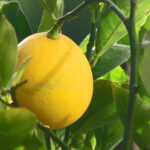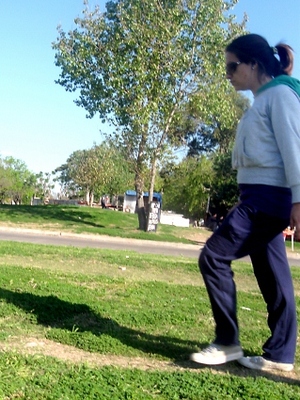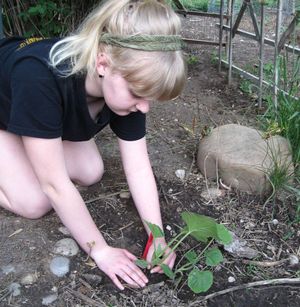Anytime that you choose to grow a tropical plant or tree in a non-tropical environment, it takes special handling and care to make it work. Banana trees are a great choice because once you learn the process, you can keep growing bananas year after year in almost any climate. All you need is a several months per year where the temperature gets fairly hot. This needs to be long enough to allow the banana plant to produce fruit if that is what you intent is.
Research the type of tree that you want to grow.
Bananas come in many varieties. Some grow quite tall. Others are somewhat shorter and a little more shrub-like in appearance. The type of fruit varies considerably also. There are types of bananas that produce fruit that is considered edible and some that do not produce edible fruit. The size of the fruit also has a lot of difference from plant to plant. So, pick the size of tree and type of fruit that you would like and find a banana tree to match it. You may not find an exact match in your area, but these plants can be shipped easily so online or catalog ordering will work.
Follow the specific directions that come with your banana tree for soil type and fertilizer.
It is best to be precise about planting the banana tree into the type of soil it prefers. However, most banana plants like similar soil and food. You want a well-drained type of soil mixture. Banana trees do not require deep soil. This means that they can be planted in a tub or large planter. Many have successfully grown and maintained a banana tree in a 10 inch pot. The contents of the pot is really the most important thing.
Banana plants like to be fed and watered.
This plant is a lot like having a pet. You have to take care of it everyday and sometimes more than once. Heavy feeding with a balanced fertilizer is a good plan. In extremely hot and dry weather, you may need to water the banana tree multiple times per day. Feeding it every few days is not a bad plan. Some people suggest that a weak fertilizer be included with each watering. A well-watered and fed plant can grow several inches per day during the hot growing season.
Tether the plant to protect it from strong winds.
Because the banana tree is a herbaceous plant and does not have bark or a woody trunk like a true tree, it is susceptible to breaking off or being damaged by wind. Loosely tie a cloth around the plant stem and anchor it to the ground on at least 3 sides. For larger trees, you may need to do this several times at different levels on the stem. Bananas have a bulb without long anchoring roots. Winds can also uproot them easily if they are not secured.
Bury the planter into the ground.
To give your plant more stability, dig a hole that will allow the planter to sit with the lip of the planter even with the top of the ground. This will make your plant more stable and also allow it to be moved easily in the fall. It will also give you a better opportunity to put the food and water right into the pot so the tree can get maximum benefit.
After the plant has produced fruit, cut the stem back to about 3 feet tall.
This may seem a little extreme, but most banana trees will die after they have produced fruit. By cutting the stem back, it will force the nourishment from the roots to be diverted to producing new plants instead of maintaining the leaves and stem of the old plant. You will see several new shoots or suckers appear at the base of the plant. Using a sharp tool, cut these away and pot them for the future.
Sometimes you can get the new plants and keep the old one, too.
If your plant does not produce fruit, you can still cut the stem back in the fall and harvest the suckers. The old stem can be stored in a cool dim place that is warm enough to prevent frost or freezing. As long as it is below 50 degrees F, the tree should stay somewhat dormant. Some books will tell you to cover the exposed cut on the stem with a sulfur type material to prevent disease. You should check for this type of care for your specific variety of banana.
If you do everything right, you should be able to produce bananas year after year and share plants with friends.
By harvesting the suckers, you will have a steady source of new plants for each growing season. After you have several trees growing each year, you will have potentially dozens of new ones every fall. These can make great gifts for friends who enjoy gardening and plants. The good news is that even if they kill the first one off, you can usually afford to be generous and give them another one.






